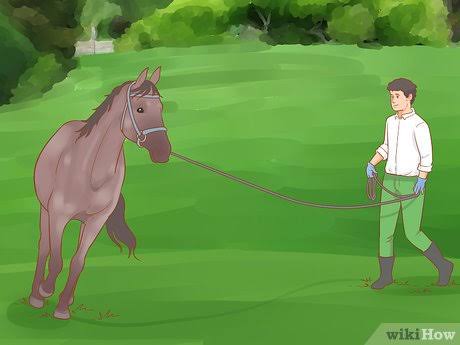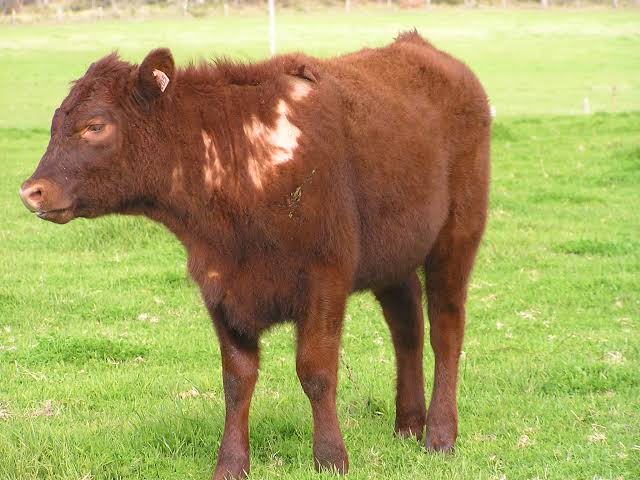Training a horse to understand instructions is one of the most rewarding experiences a rider or trainer can have. The bond that forms between horse and human during this process is joyous. Horses are intelligent animals, so they can learn new things every day.
But, how can one achieve this? This article will discuss the process of training horses to understand instructions very well. Let’s delve in immediately!
READ MORE: How to Treat Salmonella in Horses
How To Train Horses To Understand Instructions
These are the processes to follow to train your horses effectively:
Step 1: Start By Building Connection With Your Horse
The foundation of trust must be built before you can begin training your horse to fully understand commands. Horses are prey animals by nature; they are designed to be aware of any threats.
The best course of action is to establish a secure environment for your horse. Take the time to learn about your horse.
Be calm as you approach. They will be able to become used to your presence in this way. It’s a good idea to assist them relax by using light strokes.
This early stage of connection is crucial. This is because it establishes the groundwork for successful communication.
Step 2: Do Well To Reward Your Horse
Adding rewards to your daily physical activity is the next stage. Usually, this entails rewarding your horse for actions that you find desirable. Performing this consistently increases the likelihood that they will do the same thing again.
Rewards can be of many different kinds. Food, verbal compliments, or even a light stroke on the neck could be given to them. The secret is to give out incentives consistently. Give your horse rewards right away when he obeys a demand.
Step 3: Start With Simple Commands
It is essential to begin with simple commands. Good communication starts with basic cues like “walk,” “trot,” “whoa,” and “back.” It is advisable to begin in a peaceful setting without distraction.
Your horse will be able to concentrate on you and your cues because of this. Make use of precise body language and spoken orders that are clear.
For instance, step forward with your body and speak in a firm yet gentle manner when you ask your horse to walk. Horses can read body language well.
Thus, your vocal directives will be reinforced by your body language. Repeatedly practise each instruction until your horse understands it clearly. Have patience with them. Every horse will learn at a different rate.
Step 4: Ensure Groundworks Are Enforced
An essential part of a horse’s existence is groundwork. Without the extra complexity of riding, you can develop clear communication with your horse by working with him on the ground. You and your horse may strengthen your relationship and reinforce your orders with groundwork activities.
Do well to include exercises such as ground driving, lunging, and leading to teach your horse to react to your signals. During lunging, encourage your horse to circle you by using a lunge line.
This practice gives meaning to your commands while assisting them in understanding direction and pace.
Step 5: Gradually Introduce Riding Instructions
The moment to switch to riding commands comes when your horse has mastered the fundamental ground instructions. This change may be thrilling since it will allow you to collaborate differently. Start with riding and giving well-known instructions like “walk” and “whoa.”
Communicate well by using your legs, reins, and voice. To order your horse to stop, softly pull back on the reins, and to signal for them to advance, clench your legs. Remember that when your horse does well, you should reward him.
Step 6: Be Fully Consistent
When teaching horses to comprehend commands, consistency is essential. To prevent confusion, work with your horse using the same cues and orders each time.
Your horse will be better able to link particular behaviours to your orders if you are consistent.
Throughout the training process, exercise patience. Since every horse learns differently, it’s normal for them to experience both good and bad days. If a certain command is difficult for your horse, stop and try again later.
Step 7: Use Visual and Auditory Gestures
You can use visual and auditory cues to help your horse learn in addition to vocal orders. Your horse’s comprehension of commands may improve.
Horses learn best visually, you can reinforce your spoken orders using hand signals or body language. For instance, you can give verbal instructions to turn your horse while simultaneously using your hand to indicate the direction.
This method enhances your horse’s cognition by assisting them in connecting the many stimuli. Moreover, auditory signals can be useful. Make an effort to employ a range of sounds.
To let your horse know when they’ve done something you want them to do, you can use a clicker or a particular whistle. As a result, the behaviour and the sound may become associated.
Step 8: Introduce Advanced Training Techniques
You can start using more complex training methods once your horse has a firm understanding of the fundamental commands. This can involve hopping, lateral motions, or even stunts.
When presenting new methods, divide them into smaller steps. If you’re teaching your horse to jump, for instance, start with smaller hurdles and then raise the height. To boost their confidence, make sure to reward them after each successful try.





One thought on “How to Train Horses to Understand Instructions”